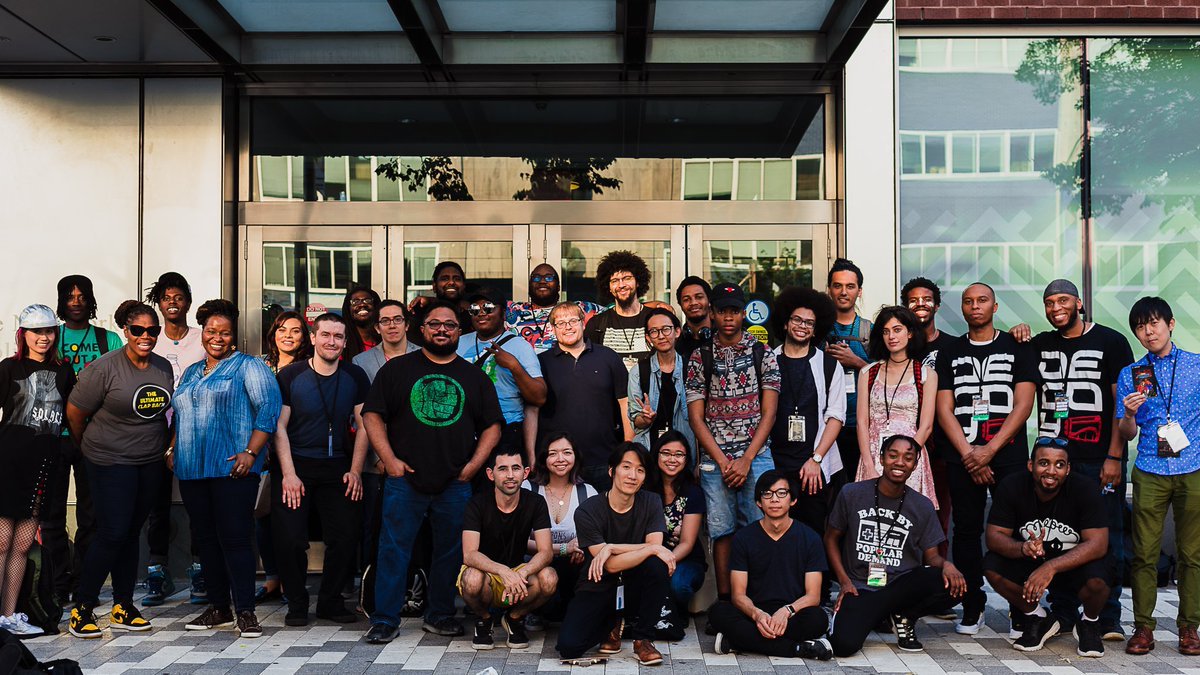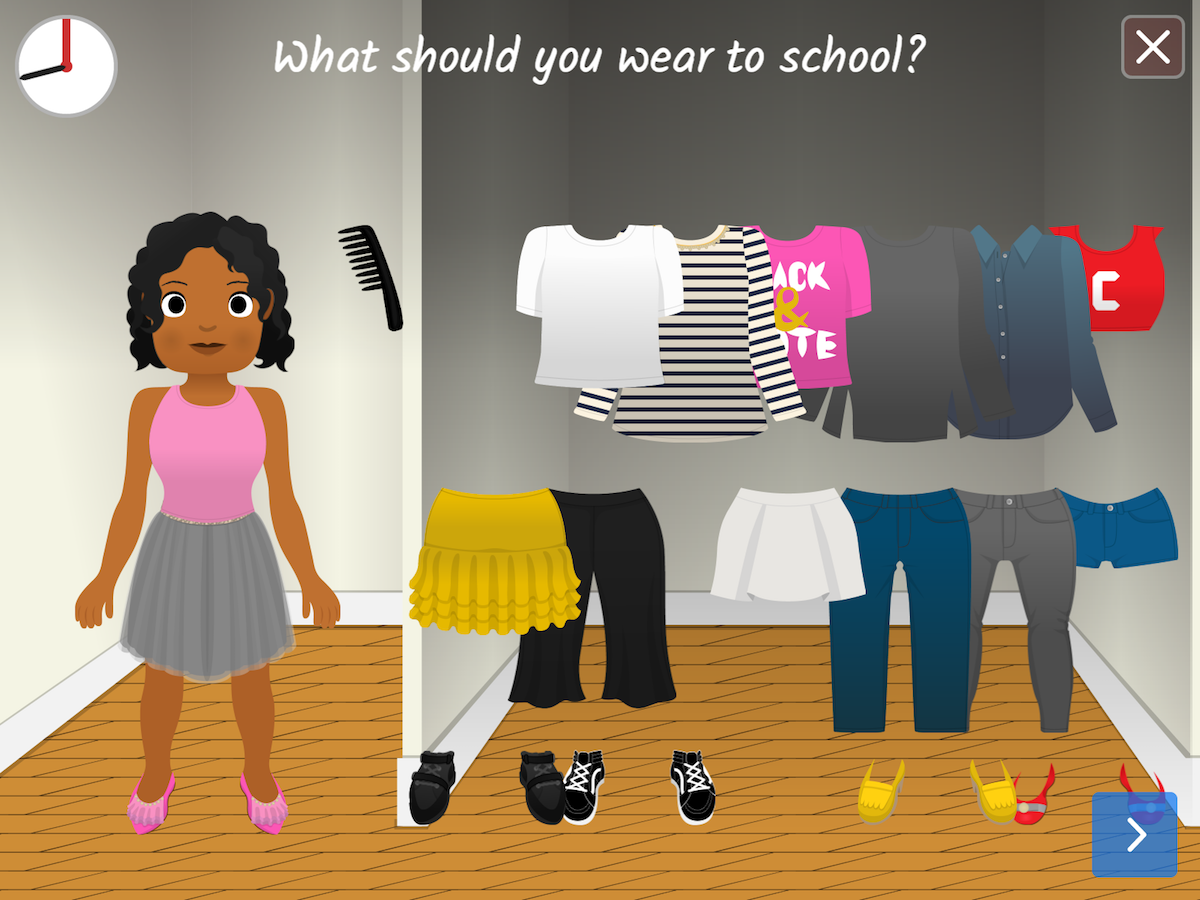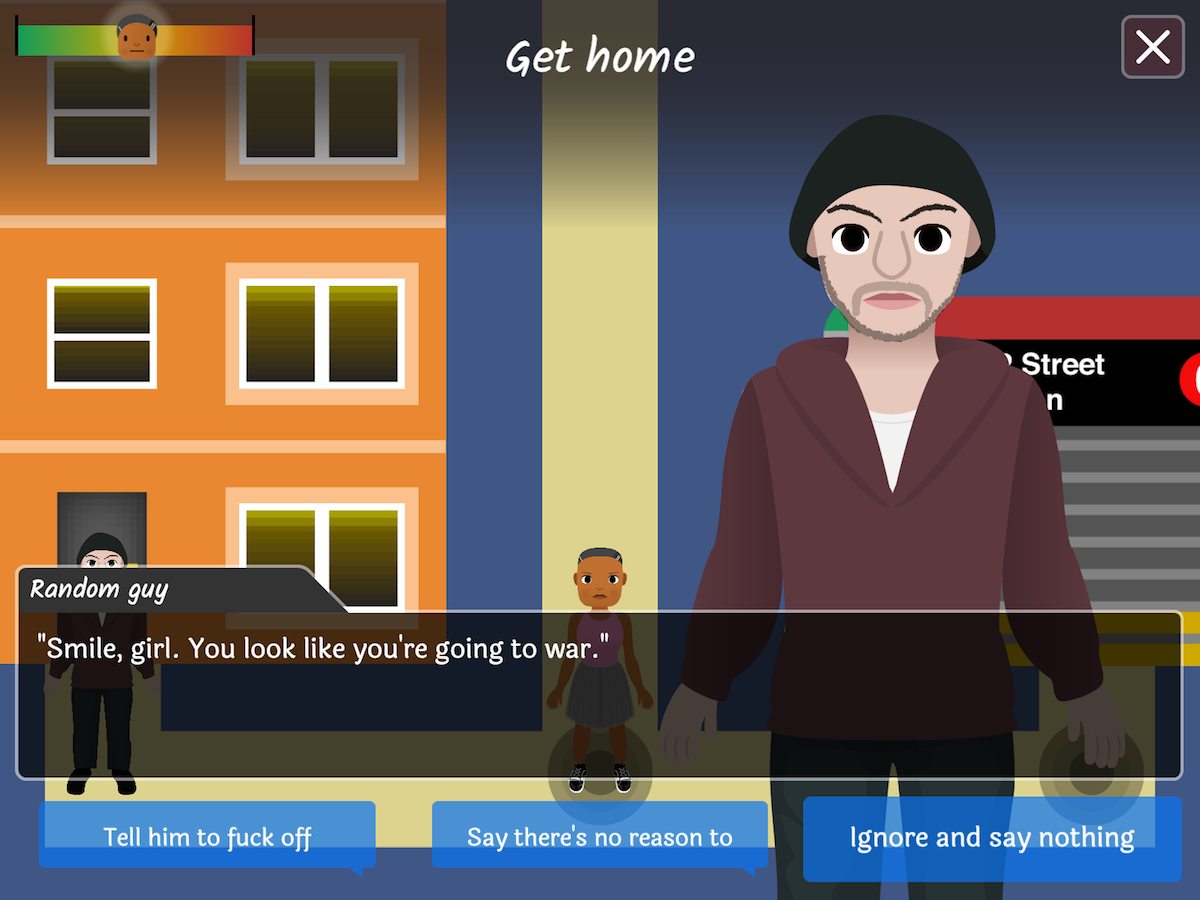Catt Small on Being Successful in Making Games

Photo Credits: Gianna Rovelli & gamedevsofcolorexpo.com
Catt and I met in 2017 when we shared a stage at dibi Conference in Newcastle: I was sharing learnings from the games industry that are applicable to design work, and Catt talked about how the learnings from UX design helped her make games as a side hustle.
In her day job at Etsy, Catt designs tools that give sellers insights about their shops and help them reach new buyers. On the side, she speaks about game design, runs a game developer conference and teaches school kids on how to make games – and of course, designs and develops games as side projects. Her latest game, SweetXheart, was just released. She describes the game an autobiographical visual novel about race, gender, and microaggressions.
I hung out with Catt to talk about her game, her job and how she motivated herself to finish the project.
Jo: Hi Catt, you’re a Product Designer, you’re a successful public speaker, but your true passion is making games. What brought you there?
Catt: I started making games as a teenager. I was always playing video games – my first console was a Sega Genesis, where I was playing Sonic the Hedgehog. When I realized that people could make video games, I wanted to figure out how I can do this. At the time, I was around 10 or 13, there wasn’t really a way to make a game beyond dress-up dolls – things you could point and click and drop – that was pretty much it. So I put that down for a bit.
When I got older, there were more movements to make gaming accessible to people outside of game development or the software industry. I started working on games as side projects in 2009.
Pretty much all of the tools you need to make games are accessible and affordable now, like Unity or Gamemaker. I like that we have the same tools as people who are working professionally in the games industry.
It has become so much easier going from idea to final product, making the game.
The people who could make games before were people who had access to technology: Children of academics, college teachers or professors. Nowadays, pretty much everyone has access to a computer.
The fact that anyone can download these tools has definitely opened up the field to everyone. That’s amazing! The biggest challenge today is: Do you have some time to experiment? There are tons of tutorials online, which is completely different from the ways it used to be. Now it’s about making sure that everyone has access to these materials, that everyone has the same opportunities.
Diversity in game making is an important topic – in your TEDx talk, you mention that there’s only 3-7% of people in the games industry are female developers.
There are a lot of people who play video games, but it is interesting how much less diverse the people making games are. A lot of the things I and my friends are doing is to make sure that there is equal access to the tools and the knowledge that is out there. Making video games is one of the easiest ways to learn programming.
Part of the reason is that in some schools there are game development classes and in many other, disadvantaged places, there aren’t a variety of classes for computer science or video games. We are trying to show people that there a lot of game developers who are for example black. The knowledge alone that there are other people like you out there is super great.
Also, having actual events that are low-cost, $5-20 for tickets, where you can see people who look like you on a stage, talking about how they made video games, is super-inspiring. We will be hosting another Game Devs of Color Expo this year in summer in New York.
We hope we can make people aware of their potential, keeping them from getting pressured into going a more traditional route. It turned out that you can be quite successful in making games. You can also use the skills you learn from game development to do a variety of other jobs, pretty much as I did.

Do you see a difference in the games that people with diverse backgrounds make?
It’s been really cool to see the stuff that people come up with. The traditional thing that people think of when thinking about video gaming is maybe Fortnite. The more diverse viewpoints you have, the more potential strange and awesome things people come up with.
Take that game called “NOUR”: They took a bunch of foods and colors, like popcorn, bubble tea, pancakes, and sausages. You can do weird and satisfying things to them, drop bubble, pop corn and so on. It appeases the natural urge of playing with your food, in that space that has no limits.
I don’t think that would have happened if that person wouldn’t have learned how to make video games. Getting as many people as possible to learn to make video games, will result in a lot of really fun, random and interesting combinations of mechanics and ideas.

Now you released your own game, SweetXheart. Tell us about it!
SweetXheart is a game that started as an independent study project during grad school. I kept working on it. It is this autobiographic games, using several experiences I had in college. I grew up as a black woman in the Bronx, going to undergrad school in Manhattan. Going every morning from a place where you’re surrounded by so many different people from so many different places to a place that was mostly white was really disorienting to me. Also navigating the tech industry at the same time. Making this game has been very therapeutic.
What’s the meaning of the name, how do you pronounce the X?
The name is based on cat-calling. Many people called me “Sweetheart” on the street, which is a very creepy and uncomfortable term for me as an adult person. It also describes the players experience very nicely.
The X is silent – in many Japanese video games, they have an X in the middle of the name to make it sound cooler. I thought that would work very well – a moment where the character is pushing back against the thing that people call her. A fun take on the word itself. It stuck really quickly with me.
How long did you work on SweetXheart?
I started working on SweetXheart in 2014. It’s been a loooong time! (laughs).
That is a long time! How many hours did spend working on the game?
I’m just overwhelmed by thinking of it! It’s been multiple hundreds of hours, if not like over a thousand. I’ve never done the math. (laughs)
What motivated you to stick with game development and not quit in these five years?
That’s a great question! I kept working on the game, after the class project was done, in my spare time because I wanted to at some point feel like it was good enough to release.

It’s my longest game and I saw the potential for it to be an experience that people could play for thirty minutes to an hour. Most of my games are around 5 minutes maximum. So I was coming back to it maybe a couple of hours per week. When it started to feel really good, I began putting it in front of people to test it out. Over time, I would see people getting more and more emotionally invested in it, getting people aware that it was “a thing”, that motivated me.
I also took a lot of breaks from it, where I didn’t touch the game at all. I left it alone when I didn’t feel very inspired or stressed out.
I am a strong believer in not pressuring myself if it is a side project. That pressure can actually subtract from the quality of the work that you’re trying to do. At some point, you have to decide that it is “good enough”, and that it is never gonna be amazing.

Sometimes things would just happen to me in my life that would inspire me to work on it again. For example one time, someone harassed me on the train and I wrote that experience down and started funneling that into an experience in the game.
I hope that by playing it people get to see what it was to be me at the time, being 19 years old, trying to figure out a lot about my life. Understanding how people saw me and not just how I saw myself. I had a lot of fun testing it out with people, also using a lot of my UX design chops, going through the process.
How did being a UX designer help you be a better game developer – and vice versa?
Game design and UX design is pretty much the same set of skills – you give people the ability to do things. In games, you get them to perform a task – but you want them to figure the task out first, instead of making it as easy as possible for them. That’s really fun and interesting – and hopefully makes me better at my full-time job as well.
As a UX designer, I am used to testing stuff out with people, so I got much more comfortable with taking something I was working on for a couple of hours and then putting it in front of someone, and say “Hey can you try this out” and then see if it’s worth continuing on.
My ideas got much less precious, I became better at writing because of the amount of dialogue in my game. I became a way better programmer, I learned how Switch statements worked, which I never had to use before. It helped me think about the little details in design, like the impact that animations or sound have. I definitely am thankful for the work I was able to do with games, they inspired a lot of the work I could come up with.
What mistakes did you make while working on SweetXheart and what did you learn from it?
For a while was trying to continuously update the game to the newest version of the framework it was on – don’t do that.
I wasn’t really a great writer at the beginning for the style I was looking for – that got better. Over time, I learned that your first take is not gonna be perfect. For me, everything was a learning opportunity rather than a mistake.
How do people at work react to your side project?
People at work know that I make games and they’ve been quite positive about it, so I am very lucky to work at a place where everyone’s encouraged to have a thing that they do outside of work.
At Etsy, we have a lot of people who do singing or make pottery or ride motorcycles or all kinds of stuff and are super passionate about those things. Everyone at my job has been very, very encouraging. I brought in some of my other projects to play them with people at my job so they could see what I do.
People sometimes will ask “Hey how’s the project going?” – that also forces me to be a little more accountable for finishing the things that I’m working on. I am really fortunate in my company about these things, and I hope that this becomes more the norm over time.
What would you recommend to anyone who isn’t that fortunate with their work place?
When you’re starting a new job, make sure you fully read your contract, at least in the United States they have lots of clauses for working on side projects. I make sure that I do not do any work on personal projects on my company’s property – I have my own laptop and I make sure that all of my stuff that I’m doing on the side is on my personal computer.
Declare these kinds of things – when I started at Etsy, I told them that I run events and make games. That was a good way of putting it up front for people. When you aren’t sure, reach out to HR and ask, usually they’re supposed to be able to help you with that stuff.
Last question: If you weren’t a designer, what would rather be?
Oh my god … oh man … I mean … that’s really hard! (Laughs). I would totally be an interior designer, but that’s still design, oh no! I might do writing, maybe be a journalist. Writing is really therapeutic for me.
Head over to Catt’s website and play SweetXheart now. If you are interested in learning about how to make games yourself, check out Catt’s Skillshare class.